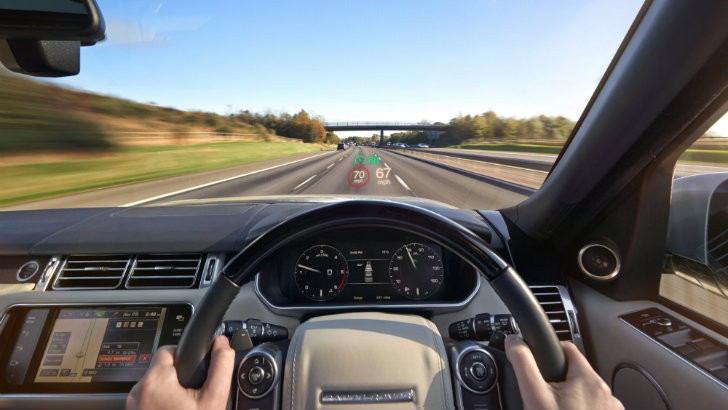The 4x4 luxobarge we call the Range Rover just got a little better recently. It’s not like the L405 generation of the breed wasn’t already a very capable means of transport, but engineers just made it better than ever by reworking the Range Rover’s fine details.
Probably the biggest news is a system dubbed the All-Terrain Progress Control. Peer through the fancy name and you’ll find out that ATPC is basically a cruise control feature that’s been developed specifically for off-road duties. It’s a bit curious why anyone would need such a thing, especially when you consider that Range Rover owners aren’t the type to get their off-road adventure pants on.
Nevertheless, this feature is monitoring and adjusting the full-size SUV’s chassis on the rough stuff for maximum traction at speeds of up to 19 mph (30 km/h). In addition to ATPC, there’s a revised HUD (head-up display) thrown in as well on both the Range Rover and the Range Rover Sport. The optional piece of tech can display the vehicle’s speed, the gear you’re in, the sat nav’s instructions and even recognizes traffic signs before they can be seen by the driver’s own eyes.
Its more powerful relative, the SDV6, is now producing 306 horsepower and a hefty 700 Nm of torque, which is 14 hp and 100 Nm more than before. Still a twin-turbo job, the updated SDV6 mill also cuts down on its heavy drinking habits. Thanks to various improvements and calibrations, the powerplant is now 7 percent more frugal, returning 40.4 mpg (7 liters / 100 km) while producing 185 g of CO2 per km.
Nevertheless, this feature is monitoring and adjusting the full-size SUV’s chassis on the rough stuff for maximum traction at speeds of up to 19 mph (30 km/h). In addition to ATPC, there’s a revised HUD (head-up display) thrown in as well on both the Range Rover and the Range Rover Sport. The optional piece of tech can display the vehicle’s speed, the gear you’re in, the sat nav’s instructions and even recognizes traffic signs before they can be seen by the driver’s own eyes.
In terms of pricing, the HUD goes for £175 and the All Terrain Progress Control is £1,000
The third and probably the most important update in terms of practicality and ownership is a revised family of turbo diesel engines. Land Rover’s TDV6 3-liter twin-turbo six-cylinder oil burner is now a single turbo job. It may have lost one of its chargers, but the power is the same as before (258 PS and 600 Nm), but a two-stage oil pump and revised fuel-injector nozzles make the enhanced TDV6 8.5 percent more economical than before. Waiting to see how this will affect the lag.Its more powerful relative, the SDV6, is now producing 306 horsepower and a hefty 700 Nm of torque, which is 14 hp and 100 Nm more than before. Still a twin-turbo job, the updated SDV6 mill also cuts down on its heavy drinking habits. Thanks to various improvements and calibrations, the powerplant is now 7 percent more frugal, returning 40.4 mpg (7 liters / 100 km) while producing 185 g of CO2 per km.






